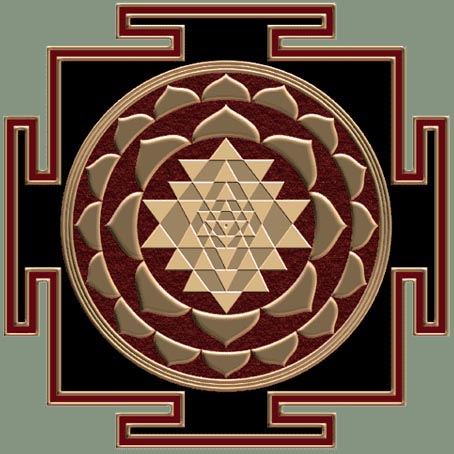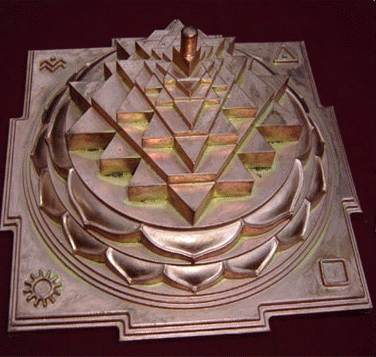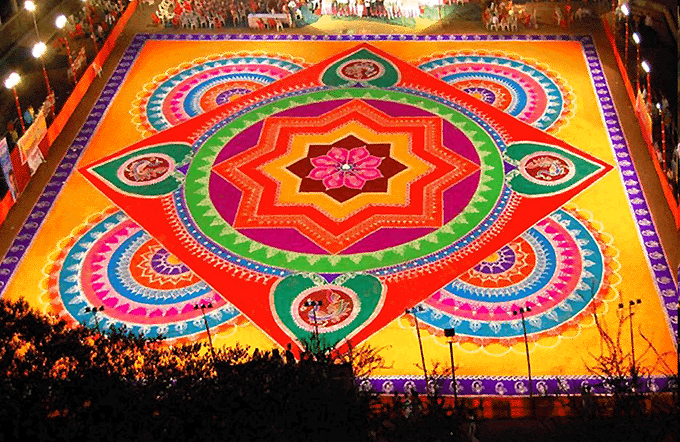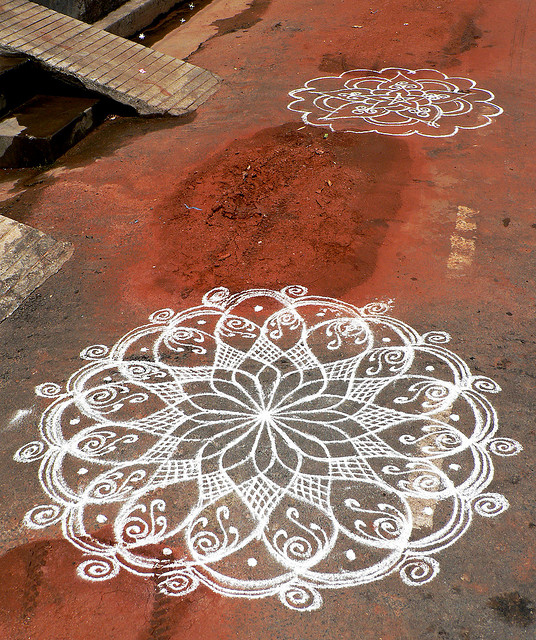
|
|
|
|
BY: SUN STAFF

Sri Yantra Feb 05, 2011 — CANADA (SUN) — A study of the historical, spiritual and cultural elements of Vedic design. At the most basic level, design motifs are physical representations. They may represent sound or a form of nature, the living entities, or any other thing found in the material or spiritual creation. Perhaps the most essential of all designs is the yantra, which in its pure form is a representation of mantra – an acoustic footprint, or symbolic representation of pure sound. In the same way that all objects or conditions can be described mathematically, yantra is a geometric expression of sound vibration. This concept has been demonstrated since ancient times by the Vedic rishis, who perform perfect chanting of mantras which in turn can move particulate matter into the precise geometric patterns of yantra. Today, mantra representations like the Om are familiar to most persons on the planet. Less familiar, but recognized by most devotees are yantras, also rendered in two-dimensional art forms. One of the most widely recognized is Sri Yantra, which is drawn in three different ways: the plane, pyramidal (Meru), or spherical (Kurma) versions.

Mount Meru at the center of Sri Yantra The field of study related to artistic renderings like yantra and mandalas is enormous, and we will revisit it often as this series unfolds, because so many traditional Vedic design motifs are derived from these primary representations. First, we would like to consider a form of artistic expression that is commonplace in both north and south India –the art of rangoli, or kolum. Rangoli and kolum are designs created on temples floors, at the entrance of homes and on street surfaces, either painted or made with colored sand or flowers. They may be geometric patterns like mandalas, or other pictorial artistic designs.

The term rangoli comes from the Sanskrit, often associated in painting with rangavalli, or creepers drawn with colours. The Chitralakshana, an ancient treatise on Vedic arts, mentions rangoli and the legend associated with its origin, which began with Lord Brahma. A young man once died in a village of families who worshipped Brahmadeva. He was the only son of the village priest. In answer to the prayers of the villagers, Lord Brahma descended and instructed the king to arrange for a portrait of the young man, which was to be made on the ground. When the portrait was complete, Lord Brahma breathed his life airs into it, and the young man came back to life. This is said to have been the first rangoli ever made. Since that time, many kings and rulers throughout India's history have continued to offer prayers through the form of rangoli, and the practice flourished in many kingdoms, including the Chola dynasty.

A very large rangoli installation As the practice of rangoli became prevalent in all part of India, many regional names for the art became known. In Tamil Nadu it is called kolam, although there are some distinct differences between rangoli and kolam which will be discussed in a later segment. In Bengal, the art is called alpana; in Andhra it is muggulu; in Kerala, puvidal, in Gujarat, sathiya, in Rajasthan it is known as mandana, and in Madhya Pradesh, as chaukpurna. Mention of rangoli is found in various Vedic texts, including the Mahabharata and Bhagavat Purana. When Lord Visnu was married to Laksmi Devi, rangoli designs adorned the floors. Likewise, when Vidura heard about Krsna's return, he prepared a rangoli as a welcome sign for Him. In the Bhagavat, there are stories about how the gopis amused themselves in order to forgot the anguish of their separation from Krsna. They engrossed themselves in creating elaborate drawings on the floor: "When a woman is neglected and disappointed, out of egoistic pride she gives up her ornaments and morosely sits down on the floor, marking lines on it with her nails."
In yesterday's segment we mentioned the 64 transcendental arts of Srimati Radharani. Likewise, kolum is mentioned in the list of 64 transcendental arts practiced by the Tamil people, and also in the 64 women's arts in the vatsyayana. The art is referred to as alekhyam -- writing with lines and colours; rangoli -- drawing to please God; and manikarma -- arranging coloured stones on the floor in a design.

| |